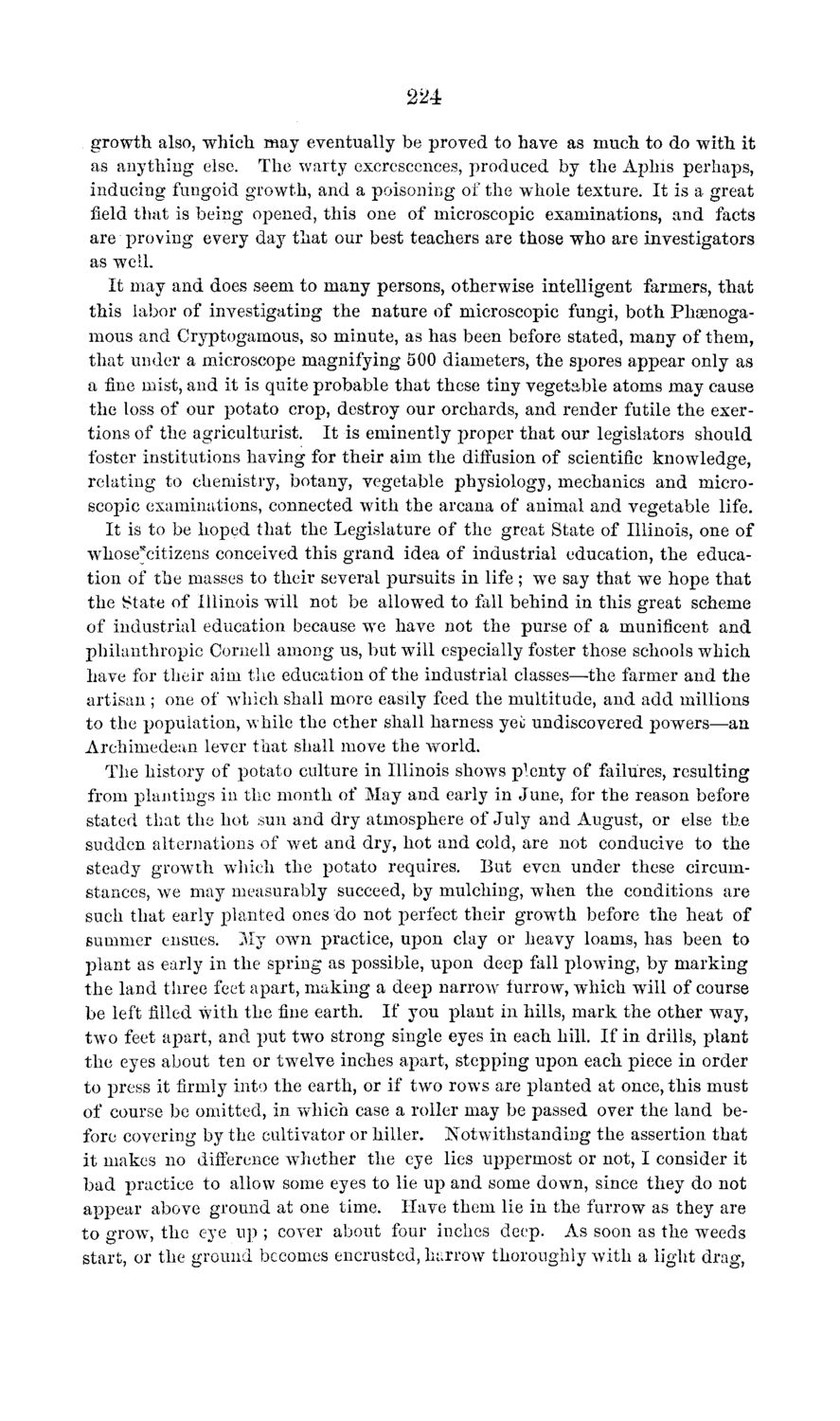| |
| |
Caption: Board of Trustees Minutes - 1869
This is a reduced-resolution page image for fast online browsing.

EXTRACTED TEXT FROM PAGE:
224 growth also, which may eventually be proved to have as much to do with it as anything else. The warty excrescences, produced by the Aphis perhaps, inducing fungoid growth, and a poisoning of the whole texture. It is a great field that is being opened, this one of microscopic examinations, and facts are proving every day that our best teachers are those who are investigators as well. It may and does seem to many persons, otherwise intelligent farmers, t h a t this labor of investigating the nature of microscopic fungi, both Phsenogamous and Cryptogamous, so minute, as has been before stated, many of them, that under a microscope magnifying 500 diameters, the spores appear only as a fine mist, and it is quite probable that these tiny vegetable atoms may cause the loss of our potato crop, destroy our orchards, and render futile the exertions of the agriculturist. It is eminently proper that our legislators should foster institutions having for their aim the diffusion of scientific knowledge, relating to chemistry, botany, vegetable physiology, mechanics and microscopic examinations, connected with the arcana of animal and vegetable life. It is to be hoped that the Legislature of the great State of Illinois, one of whose*citizens conceived this grand idea of industrial education, the education of the masses to their several pursuits in life ; we say that we hope that the State of Illinois will not be allowed to fall behind in this great scheme of industrial education because we have not the purse of a munificent and philanthropic Cornell among us, but will especially foster those schools which have for their aim the education of the industrial classes—the farmer and the artisan ; one of which shall more easily feed the multitude, and add millions to the population, while the other shall harness yeu undiscovered powers—an Archimedean lever that shall move the world. The history of potato culture in Illinois shows plenty of failures, resulting from plantings in the month of May and early in June, for the reason before stated that the hot sun and dry atmosphere of July and August, or else t h e sudden alternations of wet and dry, hot and cold, are not conducive to the steady growth which the potato requires. But even under these circumstances, we may measurably succeed, by mulching, when the conditions are such that early planted ones do not perfect their growth before the heat of summer ensues. My own practice, upon clay or heavy loams, has been to plant as early in the spring as possible, upon deep fall plowing, by marking t h e land three feet apart, making a deep narrow furrow, which will of course be left filled with the fine earth. If you plant in hills, mark the other way, two feet apart, and put two strong single eyes in each hill. If in drills, plant the eyes about ten or twelve inches apart, stepping upon each piece in order to press it firmly into the earth, or if two rows are planted at once, this must of course be omitted, in which case a roller may be passed over the land before covering by the cultivator or hiller. Notwithstanding the assertion that it makes no difference whether the eye lies uppermost or not, I consider it bad practice to allow some eyes to lie up and some down, since they do not appear above ground at one time. Have them lie in the furrow as they are to grow, the eye up ; cover about four inches deep. As soon as the weeds start, or the ground becomes encrusted, harrow thoroughly with a light drag,
| |